Cardiovascular System
The cardiovascular system, also known as the circulatory system, is a network of organs and vessels that is responsible for the transportation of nutrients, oxygen, carbon dioxide, hormones, and waste products throughout the body. It consists of the heart, blood, and blood vessels.Anatomy of the Cardiovascular System
The Heart
The heart is a muscular organ located in the chest, slightly to the left of the midline. It is divided into four chambers: the right atrium, right ventricle, left atrium, and left ventricle. The heart pumps oxygen-rich blood to the body and oxygen-poor blood to the lungs for oxygenation.Blood Vessels
The blood vessels include arteries, veins, and capillaries. Arteries carry oxygenated blood away from the heart to the body's tissues. Veins carry deoxygenated blood back to the heart. Capillaries are tiny blood vessels where the exchange of gases, nutrients, and waste products occurs.Functions of the Cardiovascular System
1. Transportation: The cardiovascular system transports nutrients, oxygen, and hormones to the body's cells and tissues, and carries waste products such as carbon dioxide away from the cells.2. Regulation: It helps regulate body temperature, pH balance, and fluid balance within the body.3. Protection: The system plays a role in the immune response and clotting to prevent excessive bleeding.Common Disorders of the Cardiovascular System
1. Hypertension (High Blood Pressure): This condition occurs when the force of blood against the artery walls is consistently too high and can lead to serious health problems.2. Coronary Artery Disease: A condition caused by the buildup of plaque in the arteries, leading to reduced blood flow to the heart.3. Heart Failure: This occurs when the heart is unable to pump enough blood to meet the body's needs.Study Guide for the Cardiovascular System
1. Anatomy: Understand the structure and function of the heart, blood vessels, and their respective chambers and layers.2. Physiology: Learn how the heart pumps blood, the pathway of blood flow, and the role of the cardiovascular system in gas exchange and nutrient delivery.3. Disorders: Study common cardiovascular disorders, their causes, symptoms, and treatment options.4. Healthy Practices: Explore the importance of a healthy diet, regular exercise, and lifestyle choices in maintaining cardiovascular health.5. Diagnostic Tools:.◂Biology Worksheets and Study Guides High School. Invertebrates
Worksheet/Answer key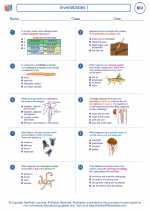 Invertebrates I
Invertebrates I  Worksheet/Answer key
Worksheet/Answer key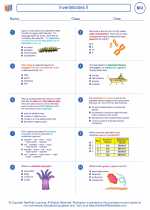 Invertebrates II
Invertebrates II  Worksheet/Answer key
Worksheet/Answer key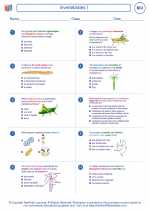 Invertebrates I
Invertebrates I  Worksheet/Answer key
Worksheet/Answer key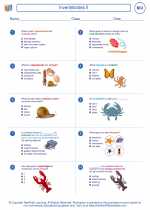 Invertebrates II
Invertebrates II  Worksheet/Answer key
Worksheet/Answer key Invertebrates I
Invertebrates I  Worksheet/Answer key
Worksheet/Answer key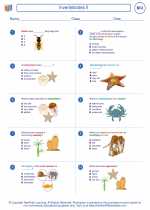 Invertebrates II
Invertebrates II  Vocabulary/Answer key
Vocabulary/Answer key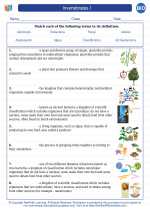 Invertebrates I
Invertebrates I  Vocabulary/Answer key
Vocabulary/Answer key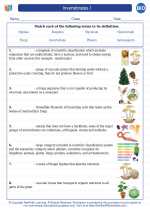 Invertebrates I
Invertebrates I  Vocabulary/Answer key
Vocabulary/Answer key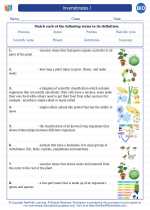 Invertebrates I
Invertebrates I 

 Worksheet/Answer key
Worksheet/Answer key
 Worksheet/Answer key
Worksheet/Answer key
 Worksheet/Answer key
Worksheet/Answer key
 Worksheet/Answer key
Worksheet/Answer key
 Worksheet/Answer key
Worksheet/Answer key
 Vocabulary/Answer key
Vocabulary/Answer key
 Vocabulary/Answer key
Vocabulary/Answer key
 Vocabulary/Answer key
Vocabulary/Answer key

The resources above cover the following skills:
Concepts of Life Science (SC1, SC2, SC3)
The student demonstrates an understanding of the structure, function, behavior, development, life cycles, and diversity of living organisms by describing the structure-function relationship